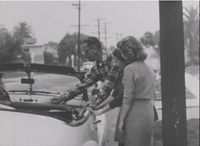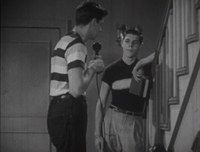Gender, Sexuality, and Going Steady
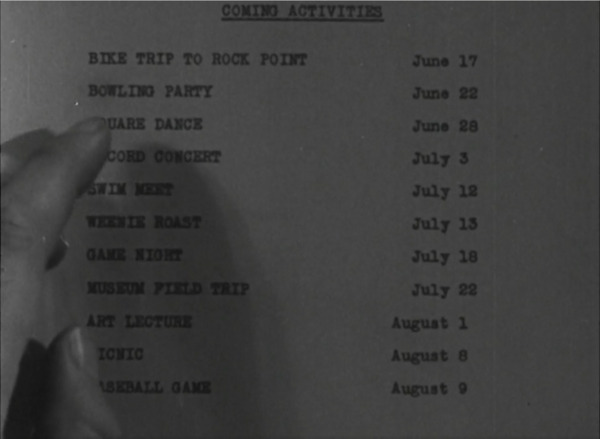
What to do on a Date provides a handy approved date guide for teenagers at 6 minutes and 4 seconds. Notice the themes of public spaces and group dynamics.
Social guidance films perpetuated gender inequality of the period. Films focused on “proper” female behaviors necessary to be deemed popular, which championed subservient females that worried about popularity and dates over smarts and careers. Passive females, who attracted male attention through only subtle encouragement, were directly portrayed in a plethora of films. A great example of this is the locker scene in More Dates for Kay, in which the schoolgirl asks for a boy’s assistance to spark a conversation. The feigned call for help is illustrated when she immediately puts the book back up when the act fails to spark a meaningful conversation. Gender dynamics are projected into adulthood as well. Mothers depicted by mental hygiene films are routinely homemakers. This even carries over into the animated world, as instanced by the mother in Johnny Learns his Manners washing dishes.
A new trend in the 1940s-1950s was “going steady”. Going steady involved serious monogamous relationships, particularly among the youth. Parents feared the potential outcomes of this trend: premarital relations and childrearing before being financially stable. To combat this, films recommended paths that limited the possibility of advanced romantic possibilities. Specifically, films connected romantic actions with unpopularity, a critical interest to preserve when films portrayed popularity above all. Further, as shown in the shot from What to do on a Date, advised dates involved public settings and even group activities. Films also pushed for parental approval of dates beforehand, as depicted in the still frame of Gossip shown below. Of course, knowing that the ability to observe unpopular activities is easiest when in public. Ultimate regulation of romantic actions laid unequally with females4, as was displayed with the main character Jean slapping the lusting Jack in Gossip.
Heterosexuality was firmed entrenched in mental hygiene films. Both overt and subtle messages and images instilling the normality of heterosexuality are everywhere in films. From images of idealized dates to off-handed remarks about proper outfit choices to not attract the gazing eyes of boys. Sometimes the messages are so casually mentioned that they can easily be missed if not paying careful attention, like the beginning description of the school by the narrator in Gossip, “Of course Marrian High is co-educational, and the other half of our student body is always interested in a pretty, popular, new girl”.
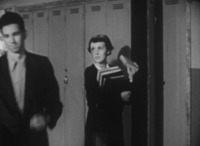
Having to resort to indirect methods to show interest in boys, the character Kay from More Dates for Kay asks for help to get a book from her locker at 3 minutes and 59 seconds. You will subtly notice her putting the book back herself directly after the failed attempt.
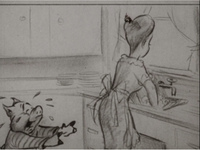
Traditional gender norms were firmly entrenched in social guidance films. Johnny Learns his Manners is no exception, with the mother insinuated to be a housewife at 10 minutes and 40 seconds into the film.

